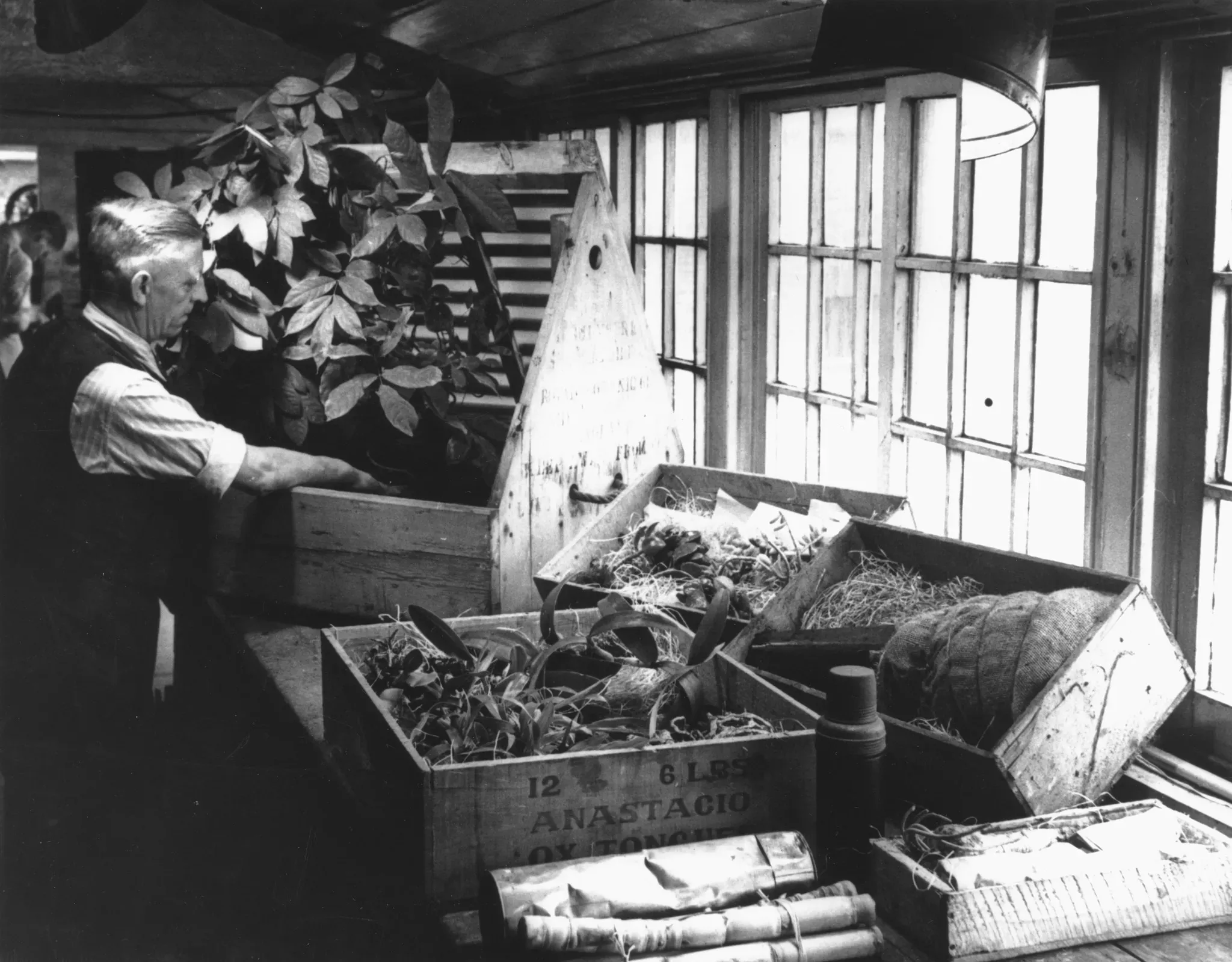23 September 2016
The Wardian case: A history of plant transportation
Philippa Lewis from Kew's Archives team reveals the important role of the Wardian case in the history of plant transportation.

Sending plants for centuries
The diverse range of plants that can be found in the Gardens and science collections at Kew are the result of a long international history. From the 18th century onwards collectors sent countless plants back to Kew from locations as far spread as New Zealand, Malaysia and Uganda. Henry Ridley, first Scientific Director of the Singapore Botanic Gardens (1888-1911), for example, sent Kew plants and seeds from his collecting expeditions in Malaysia.
However this transportation of plants was not always straightforward.
Early plant transportation
Up until the early 19th century, plants being sent back to England would often die on long sea voyages, from exposure to salt water and lack of light and fresh water. They frequently languished below deck amongst other cargo on ships headed back to England, untended by crew who resented the space the plants took up.
Here is an extract from a Kew 'Inwards book', a log of all plant material being received at the Gardens. This entry from 1793 records that three baskets of plants collected by Christopher Smith (botanist to Penang Gardens, Malaysia), arrived at Kew dead.
Creation of the Wardian case
Things improved with Nathanial Bagshaw Ward’s creation of the ‘Wardian case'.
Ward was a medical doctor, rather than a botanist, however his passion for botany led to the accidental discovery of a fern growing in a glass case, holding a cocoon of moths in 1829.
Realising that these conditions were ideal for the growth and safe transportation of plants Ward experimented further, and recorded his results in the 1842 book On the Growth of Plants in Closely Glazed Cases.
The new glass cases could be kept on deck allowing the plants to receive sunlight. The specially designed cases also protected plants from salt water, but allowed condensed moisture to reach the plants. With time and testing these cases were further developed to better protect the plants. This included the addition of crossed battens to hold the plants in place on rough crossings, and ventilation holes covered in perforated zinc to keep out rodents.

Use of the Wardian case by Kew
Although Dr Ward was not an employee of Kew, he was a correspondent of William Jackson Hooker, the first official director of Kew Gardens; and of Joseph Dalton Hooker, his son and successor.
Some of the first instances of plants being sent back to Kew in these Wardian cases were from Joseph Hooker’s travels in New Zealand during an exploratory expedition to Antarctica, 1839-1843. The following extract is from a letter sent by Hooker from the Bay of Islands, New Zealand in 1841.
"This morning however I sent on board the Exporter our large Wards case upwards of 4 foot long full of Ferns & plants for Kew Gardens. Among them you will find the Corokia buddleioides, several Alsenosmiae, Laurus Tawa & Tarairi. I filled the bottom of the box with billets of wood, covered them with Sandy soil & then put in the claey[sic] soil in which all these plants grow with some vegetable mould watered them untill[sic] the water ran freely from the plug hole, let it drain covered it up & put on the covers’" [JDH/1/2 f.80, read the full letter online at the Joseph Hooker Correspondence Project]
The Wardian case was in regular use by Kew by 1847 with a standard size case holding 28 plants.
The invention of this safe way to transport plants was vital for the development of international trade, making it possible to transplant commercially significant plants from their native habitats and introduce them to cultivation for new countries and new markets. Kew was involved in particular with the introduction of rubber and cinchona from South America to British colonies in Asia. Cinchona is the plant from which quinine is derived, it is used in the treatment of malaria which was rife in British India.
The last use of a Wardian case
In 1962 the last Wardian case used by Kew delivered a transfer of plants from Fiji. By this stage sending plants in Wardian cases by boat was an expensive means of transportation and confined only to plants which could not be sent by other means such as air transport. However the legacy of the Wardian case and the global transfer of plants it allowed, can still be seen in the plants growing at Kew and across the world today.
- Philippa Lewis -
Archives Graduate Trainee


